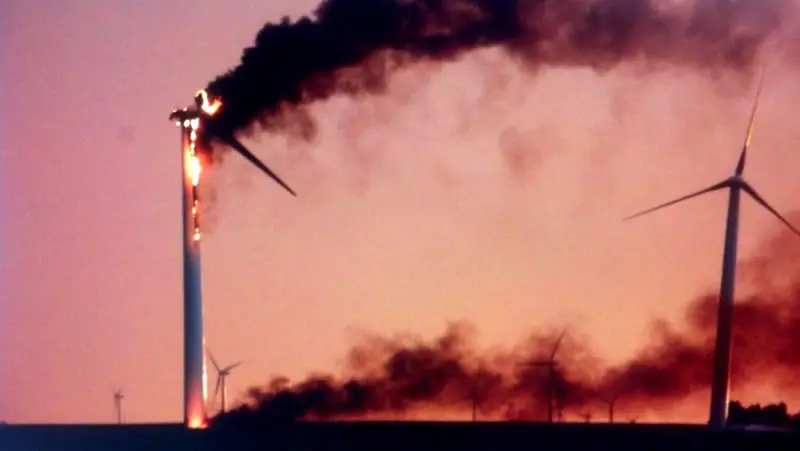
In our quest for sustainable energy, we have, ironically, created a massive ecological time bomb – our world is littered with aging wind turbines that are slowly turning into environmental hazards. These giants, once touted as beacons of a green future, stand as decaying monoliths, symbols of a dream gone awry.
Having exhausted their operational lifespan of about two decades, they sit, abandoned, with no economically viable means of recycling them. Our verdant earth and crystal seas, home to nearly eight billion souls, are now the dumping grounds for these fallen behemoths.
Take a minute, dear reader, to imagine the colossal weight of this crisis. By the year 2050, there will be a staggering 43 million tons of blade waste created each year. That’s the equivalent of throwing away 215,000 locomotives annually! It’s a monstrous waste stream that’s set to haunt our future. And as we march towards the turn of the century, with an estimated global population of over 11 billion people, the issue becomes even more pressing.
Yet, there’s a certain irony here. The leading population hubs by 2100 – India, Nigeria, China, the US, Pakistan, Democratic Republic of Congo, Indonesia, Ethiopia, Egypt, Tanzania – aren’t even the primary culprits. It’s the wealthier, less-populated nations such as Germany, the UK, Australia, Canada, Japan, and Russia that hold the lion’s share of responsibility.
Aging turbines are not just an aesthetic nightmare; they also pose serious environmental threats. As their structural integrity fails, there’s a risk of oil leaks, potential collapse, or even the eruption of a fire. Yet, despite these grave dangers, many are left to rot due to the high costs of removal and safe disposal.
There is an urgent need to address the decommissioning, restoration, and recycling of these turbines – a responsibility that rests squarely on the shoulders of the governments that once enthusiastically subsidized their design and construction. These same nations must now work diligently to mitigate the fallout and avert an environmental disaster.
To add insult to injury, these wind farms, typically located in areas with reliable wind patterns, are accused of “pathetically” destroying pristine landscapes due to their extensive acreage requirements. There is a growing public outcry over these once glorified structures, with accusations of unsightliness, noise pollution, and environmental risks becoming increasingly common.
So potent is the public’s discontent that in 2023 alone, the United States has witnessed 24 rejections of wind turbine projects and an equal number of rejections for solar projects. This rejection isn’t unique to the States; even in Europe, countries like Sweden are abandoning their green energy ambitions, citing the need for a more “stable electrical supply system“.
The energy landscape is shifting dramatically. Countries like the Netherlands, Czech Republic, and Greece are acknowledging the harsh reality that their electricity needs can’t be met by renewables alone. They’re reverting to fossil fuels, with some nations, like Sweden, opting to re-embrace nuclear power.
►Donald J. Trump: “If You Want Peace, Prepare For War. . .” Save America!
Indeed, the green dream is crumbling. Sweden has also abolished state subsidies for electric cars and plug-in hybrids. And let’s not forget the silent victims of this green energy ambition – countries like Baotou in Inner Mongolia, Bolivia, and the Democratic Republic of Congo where the mining and processing of minerals for wind turbines, solar panels, and EV batteries take place, often under Chinese control.
Germany, once a leading advocate of renewable energy, has turned to its neighbors for electricity supply, having shut down its last three remaining nuclear power plants.
Will they follow in Sweden’s footsteps and reconsider nuclear energy?
Only time will tell.
Ultimately, the global community must come together to address the pressing issue of decommissioning and recycling wind turbines. To truly achieve a sustainable future, we must find responsible and safe disposal methods for our renewable electricity infrastructure. And yet, as we stand at the precipice of an environmental crisis, the recycling of worn-out turbine blades, solar panels, and EV batteries remains an elusive goal.
This is our stark reality, dear readers, a testament to the unforeseen consequences of well-intentioned ideas.
As we grapple with these challenges, one thing is clear – the winds of change have blown, and they bear a warning we cannot afford to ignore.






